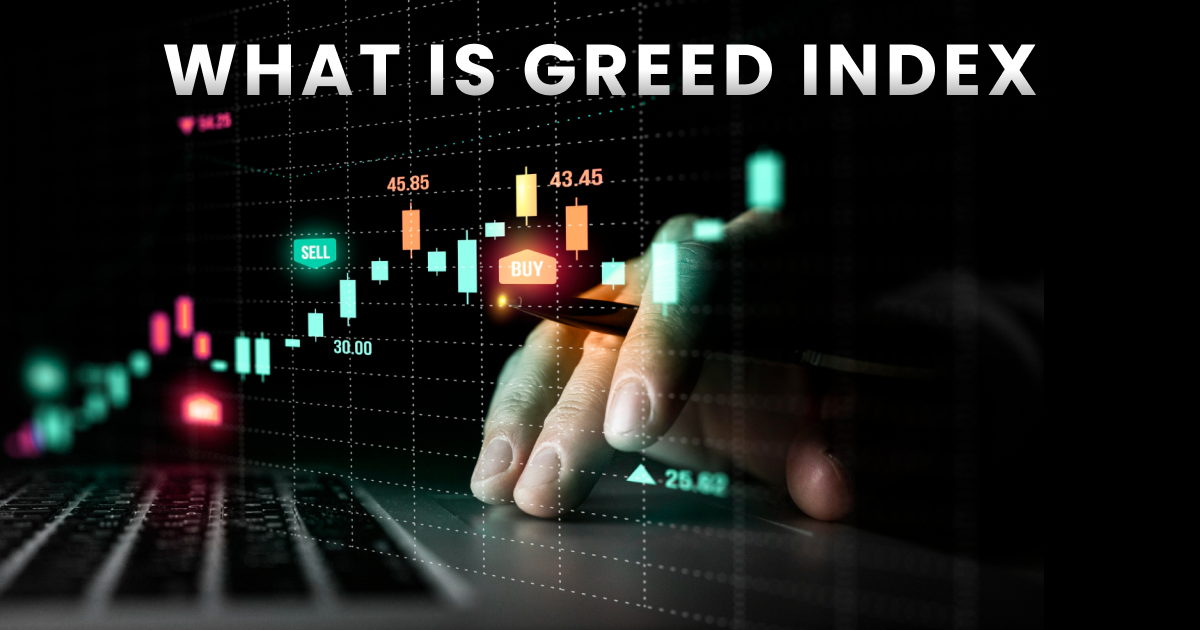
The Greed Index Unveiled: Navigating Investor Sentiment
27th February 2024 | 4 minutes read
In the fast-paced world of financial markets, investor sentiment plays a pivotal role in shaping market dynamics. One tool that seeks to quantify this sentiment is the Greed Index. Join us as we delve into the concept of the Greed Index, exploring its significance, methodology, and how investors can leverage it to gain insights into the prevailing mood of the market.
Deciphering the Greed Index
The Greed Index is a metric designed to measure the level of greed or fear in the market at a given point in time. It provides investors with a snapshot of the prevailing sentiment, helping them gauge whether market participants are overly optimistic (greedy) or excessively pessimistic (fearful).
- Key Characteristics of the Greed Index:
- Scale of 0 to 100: The Greed Index typically operates on a scale from 0 to 100, with higher values indicating greed and lower values signaling fear.
- Contrarian Indicator: Extreme readings can be interpreted as contrarian signals. For example, excessively high greed may precede market corrections.
- Components of the Greed Index:
- The Greed Index considers various factors, including market volatility, stock price breadth, and put/call ratios, to arrive at a composite score.
How the Greed Index is Calculated
The Greed Index aggregates multiple indicators to generate a holistic sentiment score.
- Volatility Measures:
- Incorporates metrics like the VIX (Volatility Index) to gauge market volatility.
- High volatility may suggest fear, while low volatility may indicate complacency.
- Breadth of the Market:
- Examines the number of advancing versus declining stocks.
- A higher proportion of advancing stocks may contribute to higher greed scores.
- Options Market Activity:
- Analyzes put/call ratios, reflecting the ratio of bearish to bullish options.
- High put/call ratios may indicate fear, while low ratios may suggest optimism.
Interpreting Greed Index Readings
Understanding the interpretation of Greed Index readings is essential for investors seeking to make informed decisions.
- Extreme Greed (80-100):
- Indicates an excessively bullish market.
- Potential signal of overvaluation, and a correction may be on the horizon.
- Moderate Greed (60-80):
- Suggests a bullish market sentiment but not at extreme levels.
- Investors may exercise caution, but a correction is not immediately imminent.
- Neutral (40-60):
- Reflects a balanced sentiment between greed and fear.
- Market participants are neither overly optimistic nor excessively pessimistic.
- Moderate Fear (20-40):
- Suggests a bearish sentiment without reaching extreme levels.
- A potential buying opportunity for contrarian investors.
- Extreme Fear (0-20):
- Indicates an excessively bearish market sentiment.
- May signal panic selling and a potential buying opportunity.
Real-World Examples and Market Impact
Explore historical instances where extreme greed or fear in the market influenced subsequent market movements.
- Tech Bubble (2000):
- Extreme greed marked the peak of the tech bubble, followed by a significant market correction.
- Financial Crisis (2008):
- Extreme fear characterized the market during the financial crisis, with panic selling leading to a market bottom.
Utilizing the Greed Index in Investment Strategies
Investors can leverage the Greed Index as part of their toolkit for making informed decisions.
- Contrarian Strategies:
- Consider contrarian moves when the index reaches extreme levels.
- Buying during extreme fear or selling during extreme greed may align with contrarian principles.
- Market Timing:
- Use the Greed Index as a timing indicator for entry or exit points.
- Extreme readings may prompt adjustments to investment portfolios.
Navigating the Emotional Currents
In conclusion, the Greed Index serves as a valuable gauge for navigating the emotional currents of financial markets. By understanding the prevailing sentiment, investors can make more informed decisions and position themselves strategically in varying market conditions.